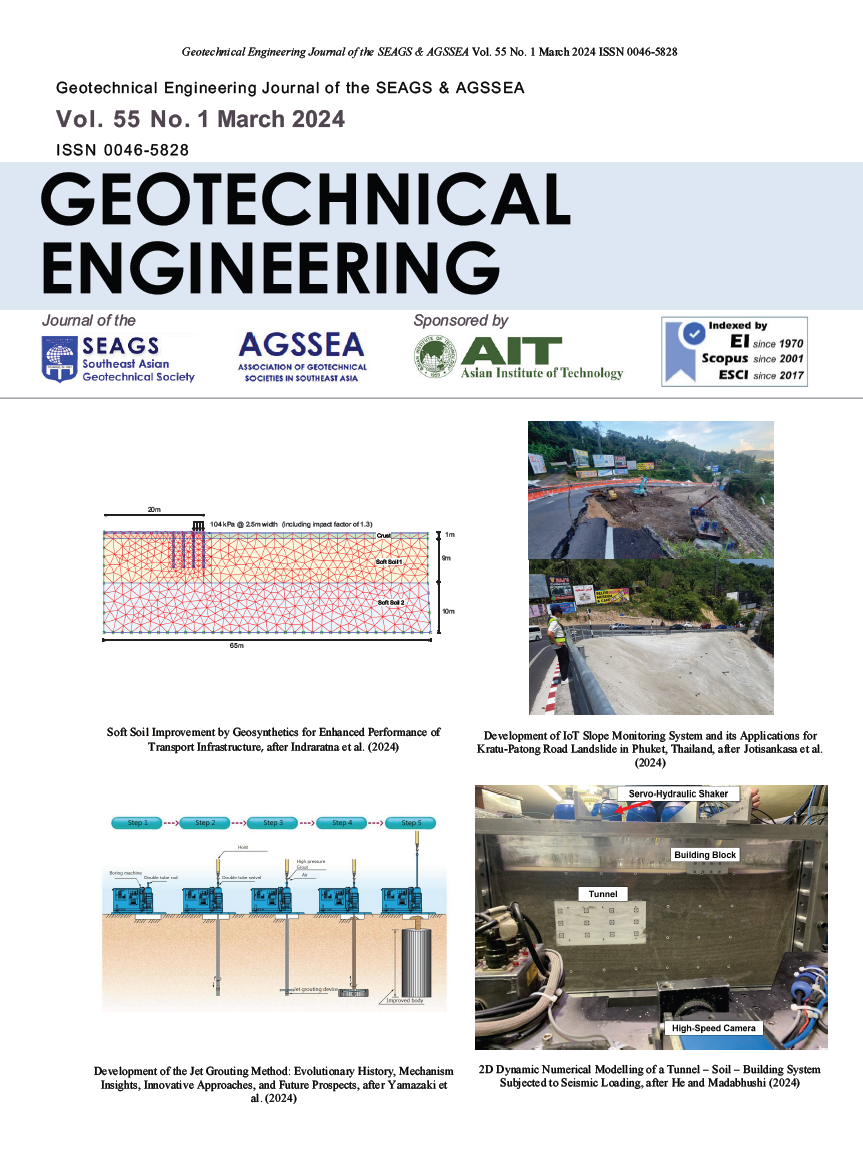Development of the Jet Grouting Method: Evolutionary History, Mechanism Insights, Innovative Approaches, and Future Prospects
Main Article Content
Abstract
The development of the jet grouting method has been a significant breakthrough in the field of geotechnical engineering. This construction method was initially developed in Japan in the 1960s and has undergone various improvements to enhance its effectiveness and efficiency. The jet grouting method involves the injection of a cement-based grout material into the ground through a high-pressure jet. It has many excellent features, such as a wide range of applicable soils, high improvement strength, and the ability to construct using small-diameter boreholes. This technique enables the creation of a solid column of grout material that can provide support to unstable soil or rock formations. However, the quality of the improved ground is influenced by various factors, including the quality of the injection flow, the lifting speed, the rotation frequency, and the soil conditions. Over the years, there have been efforts to develop new construction methods that can improve the performance of the jet grouting method. These efforts have led to the development of advanced equipment and techniques that can achieve higher grouting pressures and faster injection rates, resulting in a more efficient and cost-effective construction process. In this paper, the history of the development of the jet grouting method will be reviewed, and the basic improvement mechanism of the method and case studies that the authors have worked on will be discussed. Furthermore, the development of new methods and future challenges and prospects for the jet grouting method will be discussed.
Article Details

This work is licensed under a Creative Commons Attribution-NonCommercial-NoDerivatives 4.0 International License.
Copyright © 2019 Association of Geotechnical Societies in Southeast Asia (AGSSEA) - Southeast Asian Geotechnical Society (SEAGS).


